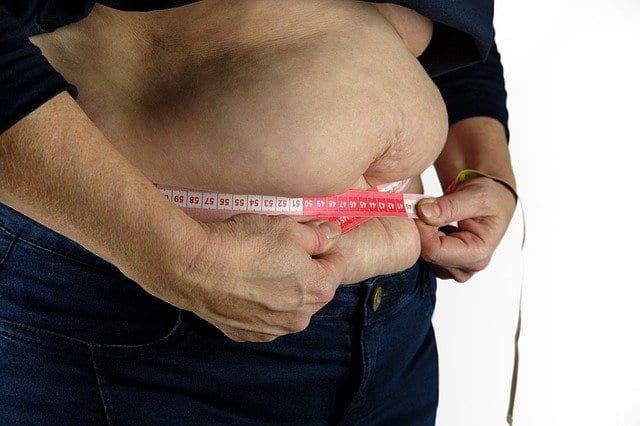new Delhi: Singer-composer Bappi Lahiri passed away at the age of 69 on Tuesday (February 15) due to obstructive sleep apnea (OSA). Lahiri, known as the ‘Disco King’ for introducing and popularizing synthesized disco music in India, was admitted to Criticare Hospital in Juhu, Mumbai on Tuesday.
Confirming his death, Dr Deepak Namjoshi, the director of the hospital, told PTI, “Lahiri was admitted to the hospital for a month and was discharged on Monday. But on Tuesday, his health deteriorated and his family’s called the doctor. Visit his house. He was brought to the hospital. He had several health problems. He died of OSA (obstructive sleep apnea) shortly before midnight.”
After Lahiri’s death, many people have been wondering what obstructive sleep apnea is. This disease is said to be the most common sleep-related disorder. Know what it is and its signs, symptoms, precautions and treatment.
What is sleep apnea?
Sleep apnea is a very common sleeping disorder in which your breathing stops for a short time while you are sleeping. There are three types of sleep apnea – obstructive, central and complex. Obstructive sleep apnea is the most prevalent and least complicated of the three.
Obstructive sleep apnea occurs when the muscles in our throat relax. Central sleep apnea occurs when our brain stops sending proper signals to the muscles that control breathing, and complex sleep apnea occurs when someone has both obstructive sleep apnea and central sleep apnea.
What is obstructive sleep apnea?
Obstructive sleep apnea or OSA is a disorder characterized by repeated collapse of the upper airway during sleep. When one sleeps, air should always flow smoothly from the mouth and nose to the lungs. When breathing stops completely during a period of sleep, it is called an apnea or an apnea episode. In OSA, normal airflow is repeatedly blocked throughout the night. OSA is most common in older men, but it can affect anyone, including children.
Elaborating on this, Dr. Vishweshwaran Balasubramaniam, Consultant Interventional Pulmonology and Sleep Medicine, Yashoda Hospitals Hyderabad shares, “Obstructive Sleep Apnea (OSA) is a very neglected and overlooked clinical disorder, affecting the Indian population. The reporting prevalence ranges from 4.4 percent to 13.7. Percent. It is characterized by recurrent episodes of partial or complete collapse of the upper airway during sleep resulting in reduced (hypopnea) or absent (apnea) airflow and may be associated with either persistent night-time stimulation or a drop in blood oxygen saturation. can. ,
OSA Symptoms
The most common symptoms of OSA are:
- snoring loudly
- interruption of breathing during sleep
- night sweats
- restlessness during sleep
- suddenly wake up gasping, suffocating
- trouble getting up in the morning
- daytime sleepiness
- morning headache
- Lack of attention
- lack of sex drive
How to Diagnose OSA
OSA can be diagnosed with either a home sleep apnea test or with in-lab polysomnography. Those who snore heavily during periods of silence should take this test.
Obesity significantly increases chances of OSA
People who are overweight have a higher risk of developing sleep apnea. Since the extra weight accumulates fat in the neck of the person which is called pharyngeal fat. This fat deposit can block a person’s upper airway during sleep.
“Sleep apnea occurs in about 3 percent of normal weight individuals, but can affect more than 20 percent of obese people,” says Dr Prashant Chhajed, Director-Pulmonology, Fortis Hiranandani Hospital, Vashi.
OSA Treatment and Tips
Wait event: Since obesity is a major factor in OSA, it is important to control your weight.
Sleep on your side Sleeping on your back can worsen OSA, so it is sometimes recommended that people with mild sleep apnea try to learn to sleep on their side.
Continuous Positive Airway Pressure (CPAP): The CPAP machine is the most common treatment prescribed for OSA patients. It slowly moves pressurized air into your airway through a mask worn over the nose and mouth (or just the nose) so that a person can keep it open during the night while sleeping. If breathing machines don’t work, the doctor may also recommend oral devices.
Bilevel Positive Airway Pressure (BPAP): In cases where CPAP is not found to be effective, BPAP machines are prescribed. They have settings that give two pressures in response to your breathing to reduce any blockage.
Surgery: If the above two treatments do not work, you should consult a doctor about surgical treatment.
Negative Effects of OSA
“Sleep apnea, mainly when the disorder is not diagnosed or treated, is associated with a number of health problems, such as heart disease (CVD), diabetes and even glaucoma. Additionally, the fatigue you may experience. Can experience – thanks to frequent awakenings during the night – can lead to accidents that could put you or others around you in danger,” explains Dr.
“The risk of cardiovascular and metabolic disease increases 2 to 3 times” with OSA, says Dr. Balasubramaniam.
Lifestyle changes to prevent and control OSA
For mild cases of sleep apnea, lifestyle changes may be enough to treat the problem. Some precautions you can take include the following. Dr Chhajed shared them:
Exercise. Even when exercise doesn’t lead to weight loss, it can reduce your sleep apnea breathing episodes, and improve your alertness and energy during the day. Aerobic exercise, resistance training and yoga are all excellent options for strengthening the muscles in your airways and improving breathing.
Avoid alcohol, anti-anxiety medication, and other sedativesEspecially before sleeping, as they relax the throat muscles and hinder breathing. Talk to your doctor to modify the dosage schedule if you are taking these medicines
raise your head Elevate the head of your bed four to six inches or elevate your body above the waist using a foam wedge or unique cervical pillow
,

